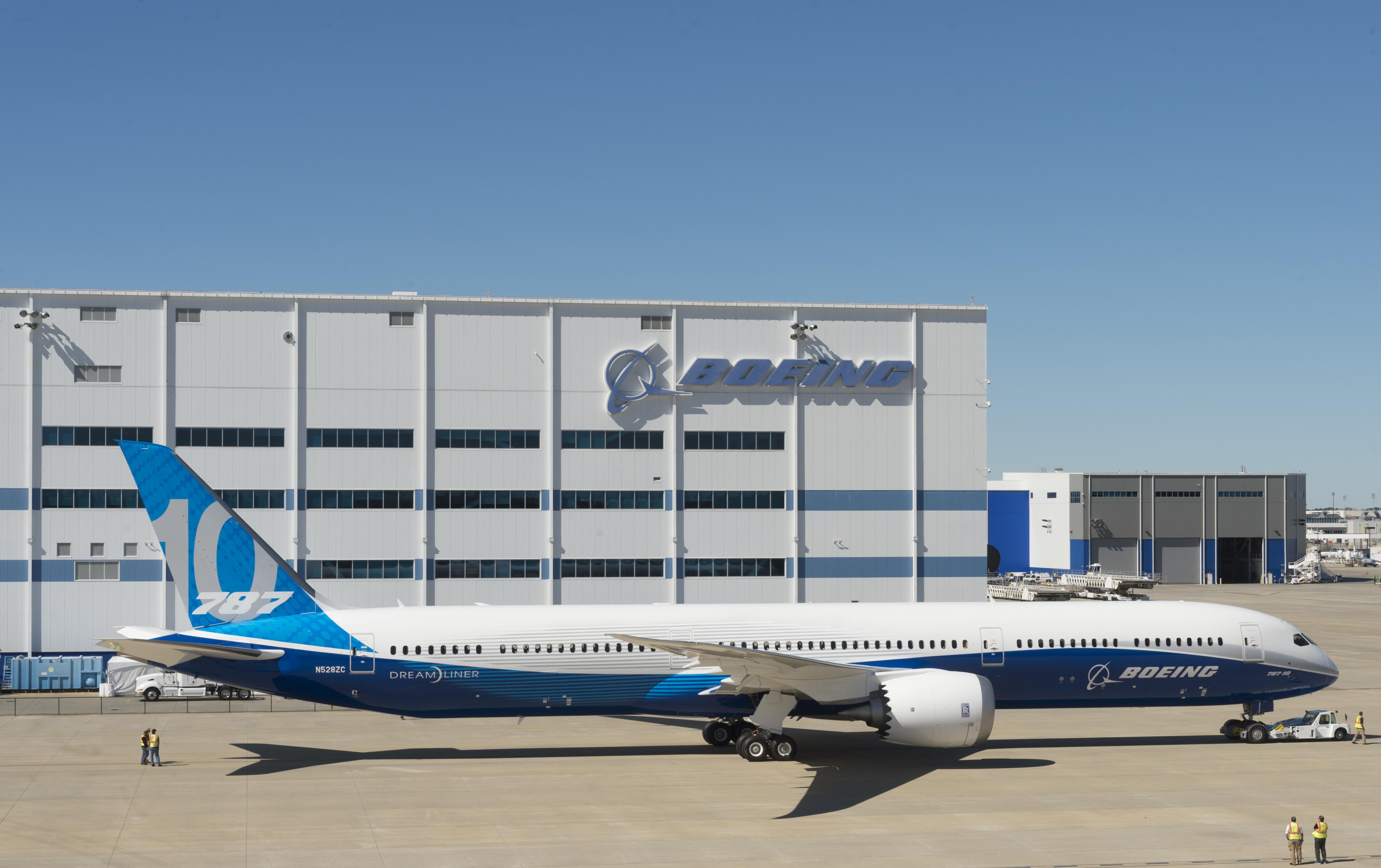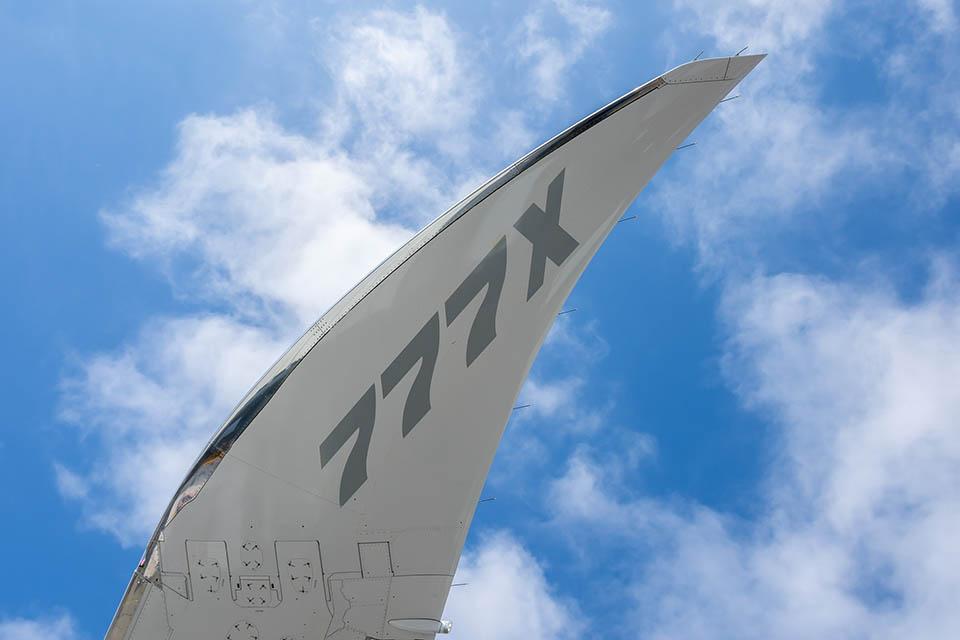Widebody Softness Triggers Boeing 787 Production Cut, Adds More Pressure To 737

Boeing’s two key widebody programs are facing stronger headwinds from both internal and external sources, prompting the company to further trim its planned 787 output for 2021 and signal that 777X certification will continue to proceed slowly.
Production of the 787, in the process of shifting to South Carolina, will fall to five aircraft per month by mid-2021, one fewer than the previously announced target, and a 50% reduction from current rates, CFO Greg Smith confirmed Dec. 4.
“The winter months have been tough so far, and we’re seeing significant [COVID-19] case spikes around the globe. And as the cases rise and you’ve seen the protocols around travel change, the recovery has slowed and continues to be uneven,” Smith said during the Credit Suisse Global Industrials Conference. “So as a result of that, we’ve made a modest adjustment to the 787 production rate.”
Both the dip in long-haul travel and production issues continue to hamper 787 deliveries as well. Boeing delivered none in November, Smith said, leaving the year-to-date total at 53. Boeing also delivered no 787s in May, but at least part of that is attributable to COVID-19-pandemic-related challenges, which included shuttering its Charleston and Everett production facilities for several weeks. Smith acknowledged that November’s lack of deliveries is at least partly due to ongoing quality issues.
“The additional time that we’re taking to inspect and ensure that each of our 787s are delivered to the highest quality standards has taken longer than we previously anticipated,” Smith said. “As a result, we delivered no 787s in November and expect the process will continue to slow deliveries in December.”
On the 777X, Smith said Boeing continues to “work with the regulators and [on] the certification work scope, including reflecting the learnings from the 737 regulatory review process.” Boeing’s latest commentary around entry-into-service (EIS) timing, reiterated during its third-quarter earnings call in late October, targets 2022 for the first 777X deliveries. Smith did not offer any firm updates.
“As in any development program, there is inherent risk that can affect schedule,” Smith said. “Timing of EIS will ultimately be influenced by the certification requirements defined by regulators.”

The FAA’s scrutiny of the 777X is being influenced by lessons learned during the 737 MAX grounding. Among the signs: FAA’s establishment of a technical advisory board to review large parts of the 777X’s design and operational elements.
Certification of the 777X was delayed for several months in 2019 because of an issue with its GE Aviation GE90 engines. Whether the added regulatory scrutiny from the MAX saga will play more of a factor than market conditions on the 777X’s time line from here on out remains to be seen.
“We expect to gain better visibility as our work with regulators progresses,” Smith said. “At the same time, we continue to stay very close to our 777X customers regarding their fleet plans and timing of deliveries.”
Uncertainty surrounding the two widebody programs places more pressure on the 737 MAX family. Boeing recently received approval to begin delivering the aircraft again following the model’s 20-month grounding. Deliveries will start with the 450-plus models Boeing has in storage and mix in new-build aircraft.
Getting the stored aircraft ready to fly will require more manpower than a normal delivery process. But Smith said Boeing’s pace will be driven by customer need.
“The constraint there won’t be our ability to deliver them,” Smith said. “It’s the pace and ability for the customers to take them.”
Airlines must have local regulatory approval to operate MAXs—something that will take months in some countries. Bigger-picture, the drop in demand related to the COVID-19 pandemic has hit narrowbody flying as well, though not as severely as widebody activity.
While many customers are slowing planned delivery rates across all aircraft families, some are looking to get more efficient, newer models into their fleets more quickly. Ryanair’s order of 75 737-8200s announced Dec. 3 includes more deliveries earlier—part of the carrier’s plan to have 210 of the newest Boeing narrowbody flying by mid-2025. Smith suggested more shuffling—both deferrals and customers moving into the queue—is in the cards.
“I think there’s a series of things that will take place that will really drive the order book,” Smith said. “Having said that, it’s unique, customer-by-customer. As you saw ... Ryanair announcing an order. And you could see more of that in the near term.”
Clearing the MAX backlog and delivering new aircraft remain Boeing’s largest cash-flow drivers. With the 787 and 777X stalling, the 737 program production rate takes on even more importance. Boeing is producing 737s at a “very low rate” now and is eyeing 31 per month “in the early 2022 time frame,” Smith said.
“Getting 737 rate back up will be the single biggest driver, even as you look from ‘20 to ’21,” Smith said, adding that “unwinding” the 787 delivery slowdown will play a large role in cash flow as well. “And then as you go from ‘21 to ‘22, if you were to rank these significant drivers, 737 again, which is tied to burning off that [stored] inventory [and] bringing up that production rate. Beyond that, it will be all market-driven, clearly, and we’ll modify production rates accordingly.”





